We Are Stoke-on-Trent: How ceramics power your car and phone
 Getty Images
Getty ImagesCeramics are everywhere - not just on your table but in your car engine, your mobile phone and your wi-fi. Though Stoke-on-Trent's ceramics industry has suffered a decline, new research and development could be starting to push The Potteries wheel forwards again.
"Most people do not realise what ceramics can be used for," said Tony Kinsella, chief executive of development firm Lucideon. "They are fundamental to our way of life. For instance a mobile phone, a smartphone - up to 600 of its components are ceramic."
Tens of thousands were employed in the city's pottery industry during its heyday. And if they weren't working in factories, many were also employed in the supply chain - as miners, canal workers, crate packers and mechanics.

Today, the fear is younger generations have no connection to the city's pottery heritage. Dr Natalie Armitage said she has noticed children, who once would have known family members in the industry, have no links to it at all.
She, along with others who work for the British Ceramics Biennial (a contemporary ceramics festival held in the city), are working to make sure this connection does not get lost.
Students are brought to the old Spode factory where they have the chance to learn about the city's heritage, get their hands dirty in clay and discover what the future might hold.

A potted history of the Potteries
- There were about 150 factories at any one time during the 19th Century. Firms over the years have included Wedgwood, Spode, Minton, Twyfords Bullers, Doulton, Davenport, George Jones, Ridgway, Cauldon China. Figures for production ran into many millions of units.
- Up to 27,000 people were directly employed in the factories, with up to 40,000 employed as a whole when supply industries were taken into consideration.
- The skyline was filled with bottle kilns. There were up to 4,000 in the late 19th Century and still about 2,000 in 1950. Now there are 47. The Clean Air Act meant many had to close. Before that, the lung disease potter's asthma was chronic among workers.
- The industry went into steep decline between the 1960s and the 1980s. Increased mechanisation, economic recession and outsourcing to the Far East were among the contributory factors.
- Some firms are prospering by specialising, keeping up with modern tastes or employing modern production techniques - Steelite, Churchill, Emma Bridgewater and Portmeirion are among these. (Sources: Michael Escolme, historian at Spode and Miranda Goodby, ceramics curator at The Potteries Museum & Art Gallery)

 Lucideon
Lucideon
"We talk about 3D printing, for example, and how we can use it in different ways. They are always interested in the technology," she said.
"There's an interactive space so they can think about the material through sounds, light and mirrors - it's all about changing the perception of the clay and how can we challenge them and get them to think differently.
"I always start by asking if they know how many ceramic components there are to a mobile phone? That always gets everyone thinking."
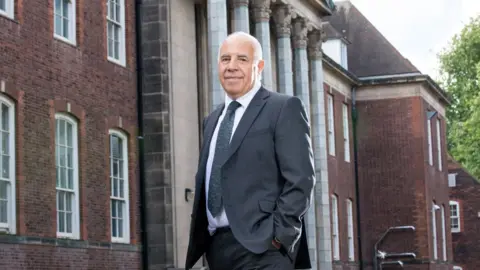 Lucideon
LucideonCeramics is an area that is rich in innovation, Dr Armitage said.
"There is the potential for young people to take it on in new and interesting ways. It won't be in the traditional ways, it will be in ways we can't even conceive of yet."
The 240 scientists at Lucideon, which started life more than 100 years ago as the British Ceramics Research Association, are working in some seriously hi-tech industries.
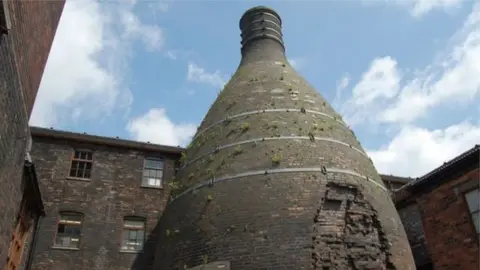
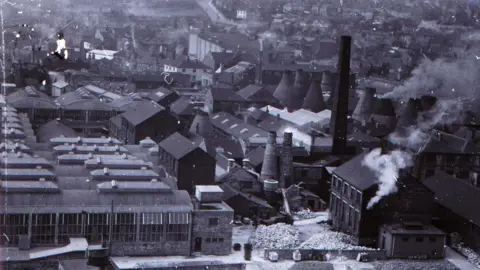 Spode Museum Trust
Spode Museum TrustHere they are developing ways of using sodium-based batteries instead of lithium to reduce environmental damage, looking at the use of ceramics within painkillers to reduce potential dependency on opioids and looking at new ways of applying heat management to engines - again to be more environmentally friendly - in the aerospace industry.
Dr Mark Cresswell, 34, a senior scientist in healthcare at Lucideon, is from Stoke-on-Trent.
"I was aware of the city's history when growing up," he said. "It is taught in school. But I never saw myself as being involved in the industry in that traditional way, but then I didn't know how much we could do in ceramics.
"We are still working with ceramics in the traditional sense but there is so much more to it."
He thinks there is no reason why Stoke-on-Trent cannot be a force in the future.
"Anyone who works in the industry is aware there is a perception of what ceramics is, so we are speaking to clients all the time to raise awareness of developments."

'It was very frightening for a 15-year-old'
Pauline Dawson began work aged 15 at Copelands, which later became Spode, after first getting a scholarship to art school to do ceramic painting.
Now 82, she does demonstrations for visitors.
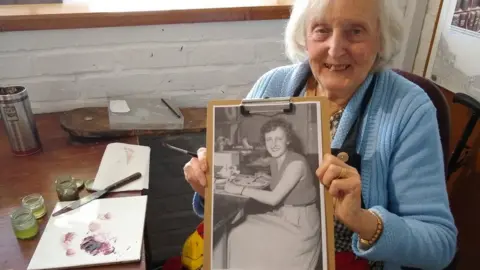 Spode Museum Trust
Spode Museum Trust"I didn't know anything about potbanks (pottery factories). It [painting] was a hobby for me, I didn't know I would be able to do it for a living.
"It was a rude awakening. There was 1,000 people worked there. When the bell rang there would be a kind of thundering sound as everyone ran to clock off. It was very frightening for a 15-year-old.
"At first I was on the top floor with Miss Trimble. She was a very nice lady but strict, she had to be with 50 of us.
"We were sat on three-legged stools from 8am to 5.30pm, with a 10-minute break in the morning and an hour for lunch. I thought it was terrible. But I enjoyed the painting and they let me go to art school on Wednesday afternoons.
"Later, I went to the bob shops where where we painted the china. It was piecework and I got a lot of money because I was quite fast. But for every £1 you earned they deducted two shillings to pay for your apprenticeship.
"Eventually, we ended up painting pieces to celebrate Princess Margaret's wedding and we had to swear on the Bible we would not tell anyone what we were doing.
"I do wish it [the industry] would all start up again. I really think we have lost some of the quality we had because it is cheaper to import from abroad."

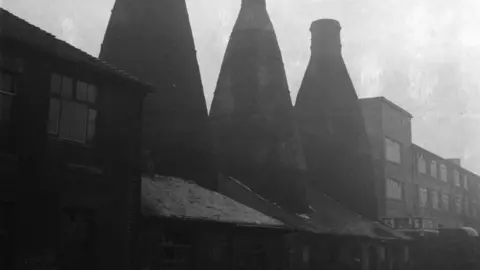 Spode Museum Trust
Spode Museum TrustWhile some firms develop and further the use of ceramics, others are looking at how traditional skills can be retained.
Neil Brownsword worked as an apprentice modeller at Wedgwood, in Barlaston, in the late 1980s.
Now he is head of ceramics at Staffordshire University and is keen the old traditions of pottery making, such as copper plate engraving, china flower making and mould making are retained.
"China flower making (where flowers are made and modelled out of clay), it's an incredible craft skill," he said. "It could be made viable again with some creative thinking.
"I think ceramics are becoming fashionable again - the younger generation seem to be turning back to it. We have to use the past as well as the future - use the technological advances."
 Spode Museum Trust
Spode Museum Trust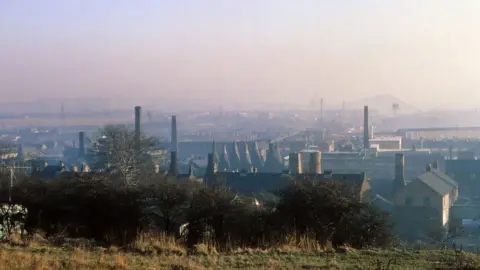 Spode Museum Trust
Spode Museum TrustAnd some businesses are prospering.
A lot of the outsourcing is now being brought back in house and anything stamped made in Stoke-on-Trent, Staffordshire or England is still a draw.
"There is still a demand for high quality wares," said Miranda Goodby, curator at The Pottteries Museum and Art Gallery.
"Steelite has really capitalised on the hospitality trade, while Emma Bridgewater brought her studios to the city 30 years ago and is a great success. Portmeirion also decamped to the city. Other smaller companies have moved here for the clay and the raw materials, it is still all being done in Stoke-on-Trent.
"The city has got a real buzz. It's all got very hi-tech and it's remarkable."
While acknowledging the city's heritage, Mr Kinsella and others are determined to drive the area and its industry forwards.
"I feel sad looking at the old buildings and the industrial wasteland in the city," he said.
"But we can't make Stoke-on-Trent into a museum - we need to build on its heritage, not live in the past."
 Ludiceon
LudiceonThe next step could be the creation of an advanced ceramic campus where, it is hoped, some of the best universities will be attracted to help develop ever newer uses and techniques.
"We have a possible site, some investors but we need money from the government - about £40m," Mr Kinsella said.
"If we can get the support I think we are three years away from making a significant impact in the city."

Get in touch
What are you proud of about the city and what are the stories you think we should tell more people about?
Have you got a question about Stoke-on-Trent you would like us to answer? You can use the tool below to submit your suggestions.
If you are reading this page on the BBC News app, you will need to visit the mobile version of the BBC News Website to submit your question on this topic.
For more information about We Are Stoke-on-Trent follow #BBCWeAreStokeonTrent on social media. You can also email us [email protected]
